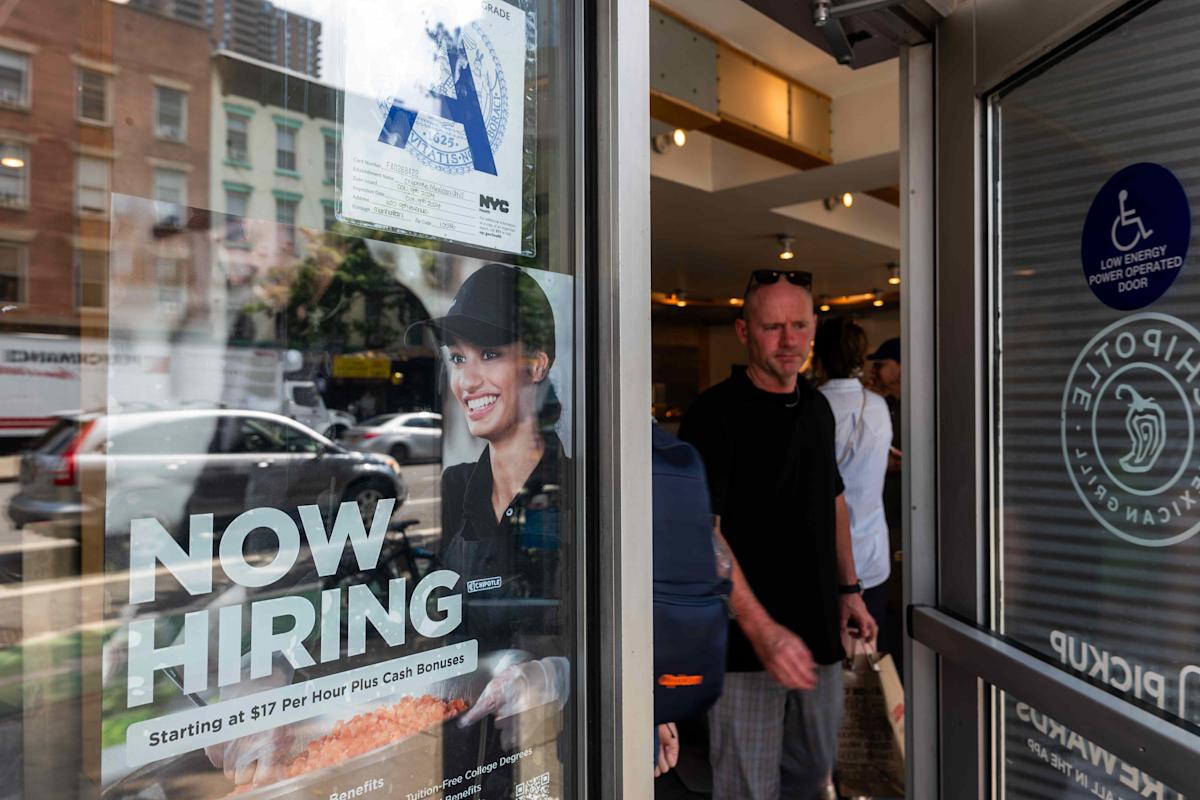Spencer Platt / Getty Images
Private jobs reports have indicated that the job market may be a little shaky.
The job market showed signs of weakness, according to a pair of reports from private companies, with one indicating that hiring is on track to be its lowest for any year since the Great Recession.
The data from ADP and Challenger, Gray & Christmas typically plays second fiddle to official government data, but that’s not being produced during the government shutdown that began on Wednesday.
Officials at the Federal Reserve may need to rely on private data when deciding later this month whether to boost the job market by lowering interest rates.
Reports from private companies painted a by-now-familiar picture of the job market in September: few were hiring, few were firing, and the labor market overall looked a little shaky.
Employers announced 54,064 job cuts in September, Challenger, Gray & Christmas, a consulting firm, said Thursday. That was a 37% decrease from August.
However, the September numbers contributed to 202,118 cuts in the third quarter, the most since 2020. Employers planned to add 204,939 jobs in the year through September, the fewest since 2009.
Economic uncertainty, tariffs, inflation, federal job cuts, and the adoption of artificial intelligence were all hurting job growth, economists at Challenger said in a press release.
The private data indicate that the job market is faltering, making it harder for workers to find jobs and increasing the likelihood that the Federal Reserve will cut interest rates in the coming months
The Challenger report was one of the few pieces of jobs data available to economists, financial markets, and officials at the Federal Reserve in the coming days. A government shutdown that began on Wednesday has delayed the release of the usual official reports on the job market. A weekly report on unemployment insurance claims was delayed Thursday morning, and a monthly report on the job market is unlikely to be published Friday morning.
Because of this, information from private companies like Challenger and payroll provider ADP may receive more attention than usual from officials at the Federal Reserve, who will meet later in October to decide whether to rescue the job market by cutting interest rates.
The private data showed the labor market still slowing down, on the heels of a surprise downturn over the summer. The economy lost 32,000 private sector jobs in September, according to ADP’s monthly report released Wednesday.
Combined, the private data kept concerns about the health of the job market alive, and put more pressure on the Fed to cut interest rates. Financial markets were pricing in near certainty the Fed would cut rates by a quarter of a percentage point in October, according to the CME Group’s FedWatch tool, which forecasts rate movements based on fed funds futures trading data. They’re also estimating there’s a 90% chance central bankers will do the same in December
Fed officials held the fed funds rate higher than usual earlier in the year out of concern that President Donald Trump’s campaign of tariffs would push up consumer prices and stoke inflation. Recently, those concerns have taken a back seat to red flags from the job market.
The Fed sets its key federal funds rate to fulfill its dual mission of keeping inflation low and employment high. A higher rate pushes up borrowing costs on all kinds of short-term loans, cooling the economy and pushing down inflation, whereas a lower rate encourages borrowing and spending, boosting the job market.
The unemployment rate was 4.3% in August, which is not high by historical standards. Still, the economy only added 22,000 jobs, far fewer than forecasters had expected, according to the most recent available official data. Despite the low unemployment rate, there were relatively few job openings and unemployed workers have had little success finding new jobs.
“Layoffs have not become systemic in the payroll data, but the increase in firing plans may portend an uptick in the coming months,” Matt Colyar, an economist at Moody’s Analytics, wrote in a commentary.
Read the original article on Investopedia

